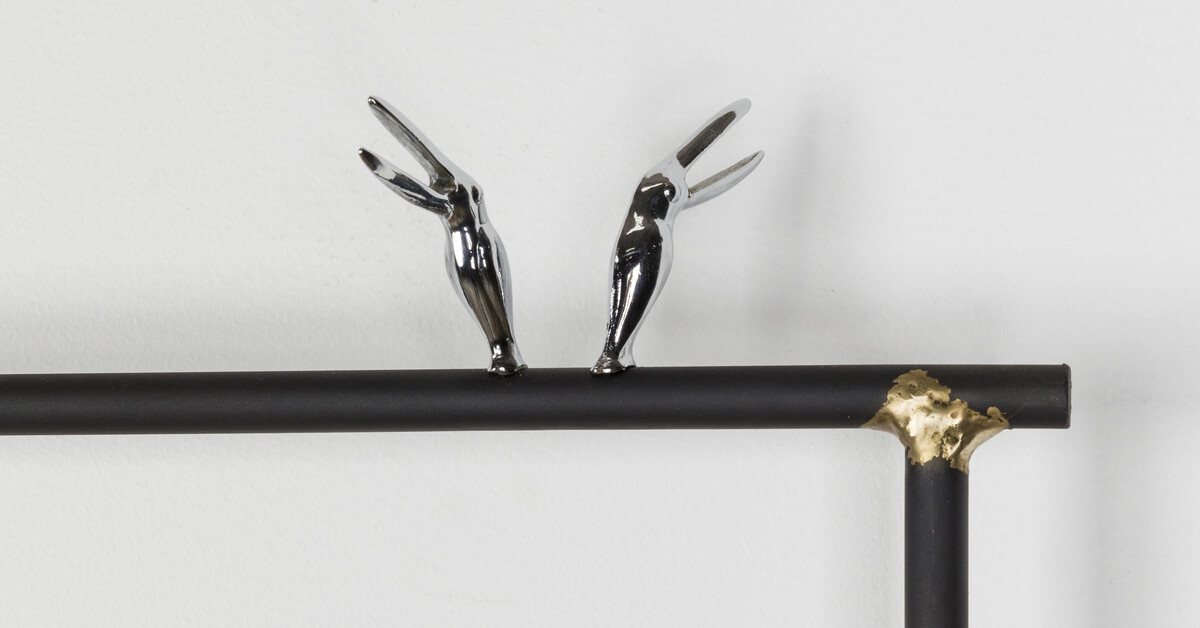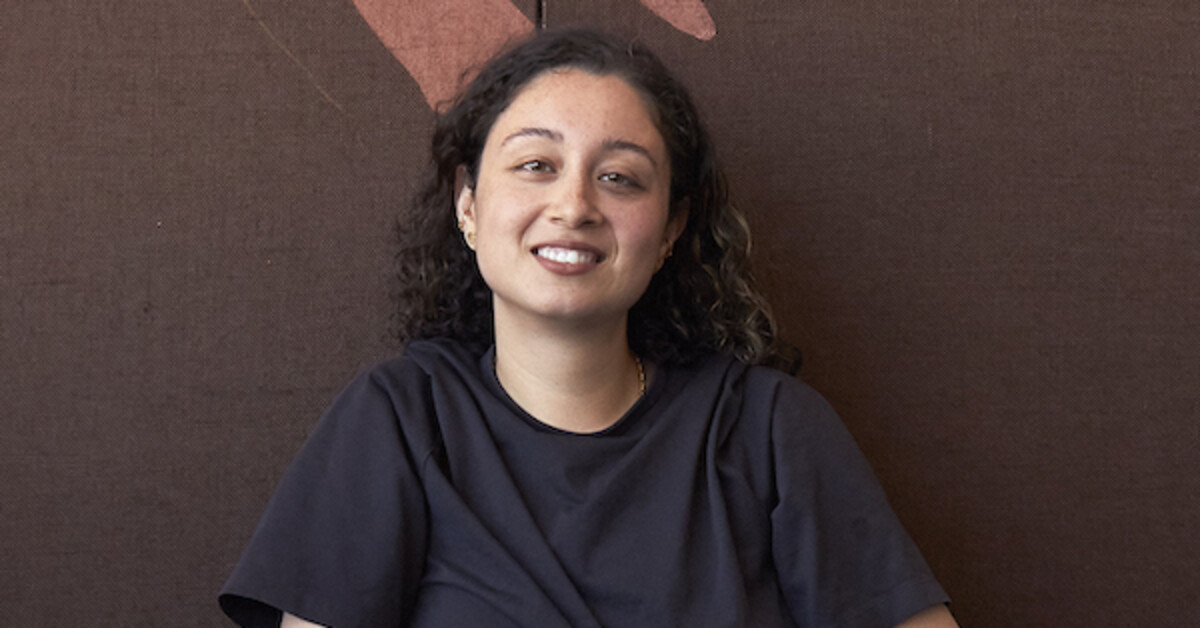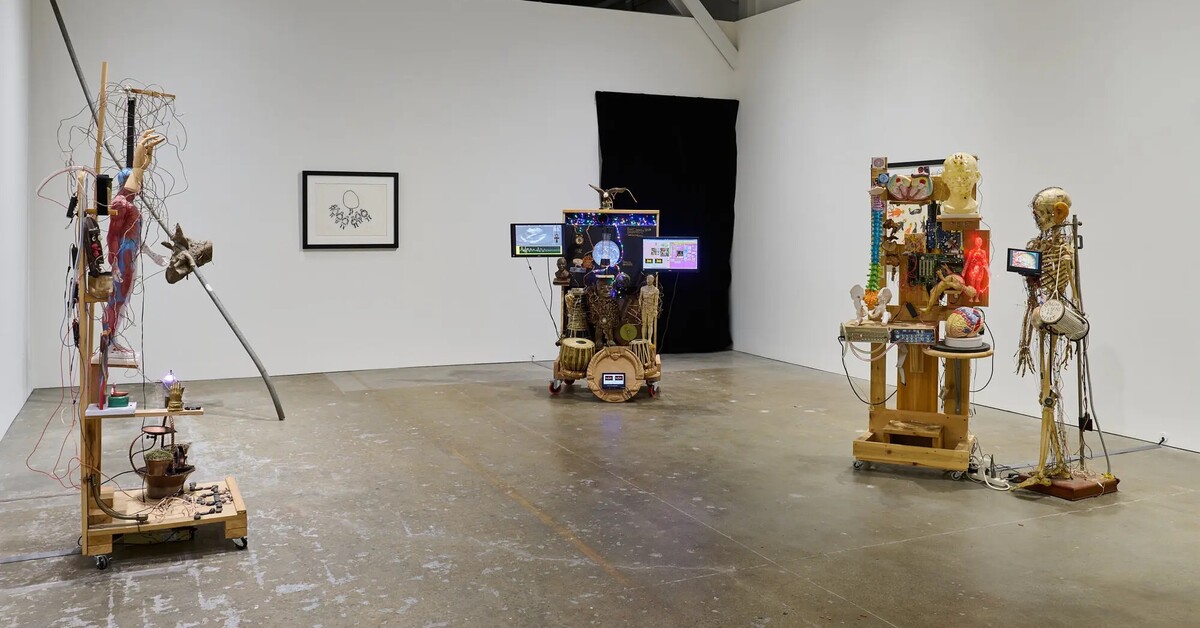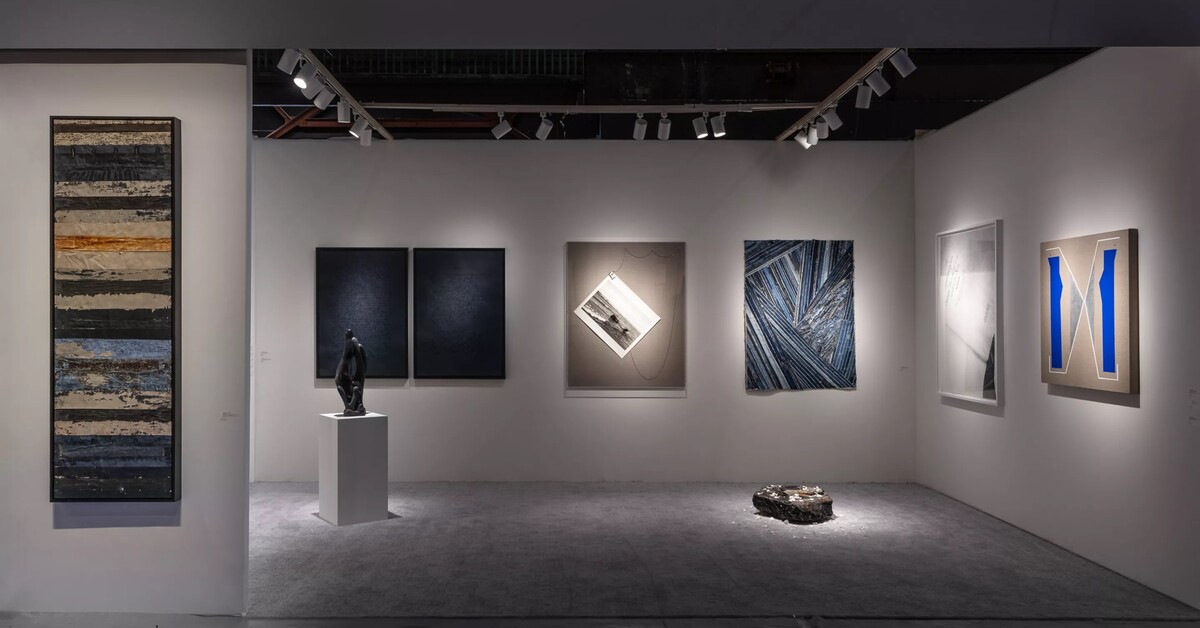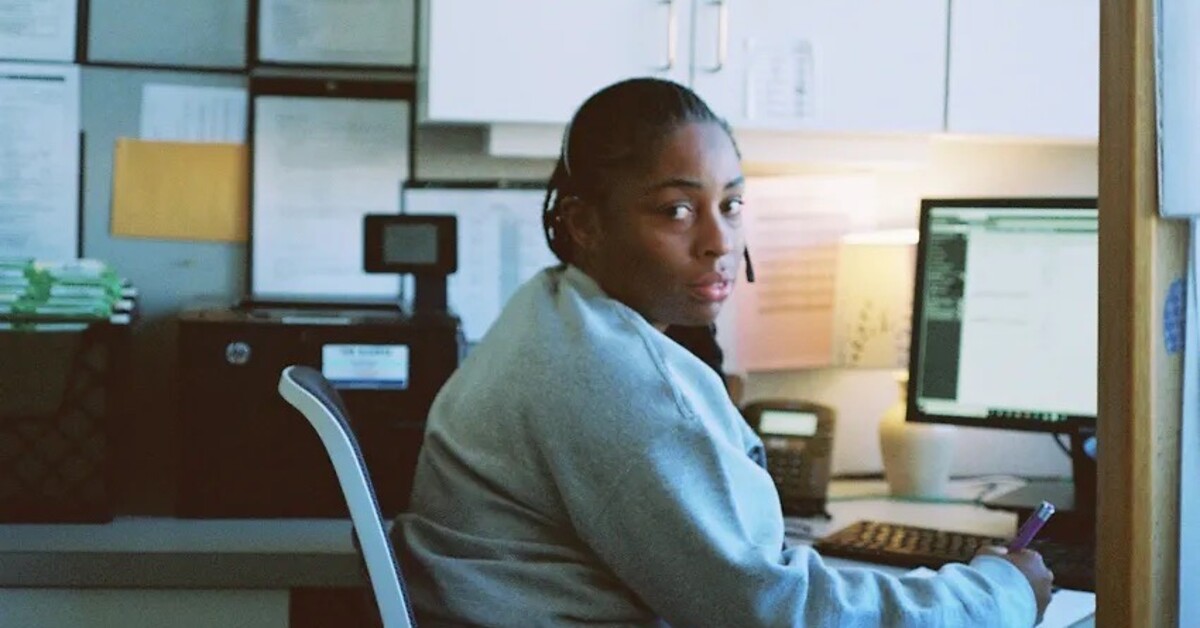Forgotten women of the American landscape
Boston Globe / Dec 21, 2023 / by Murray Whyte / Go to Original
The celebrated Hudson River School included no women artists. A new exhibition at the New Britain Museum of American Art gives them their due, 150 years later.
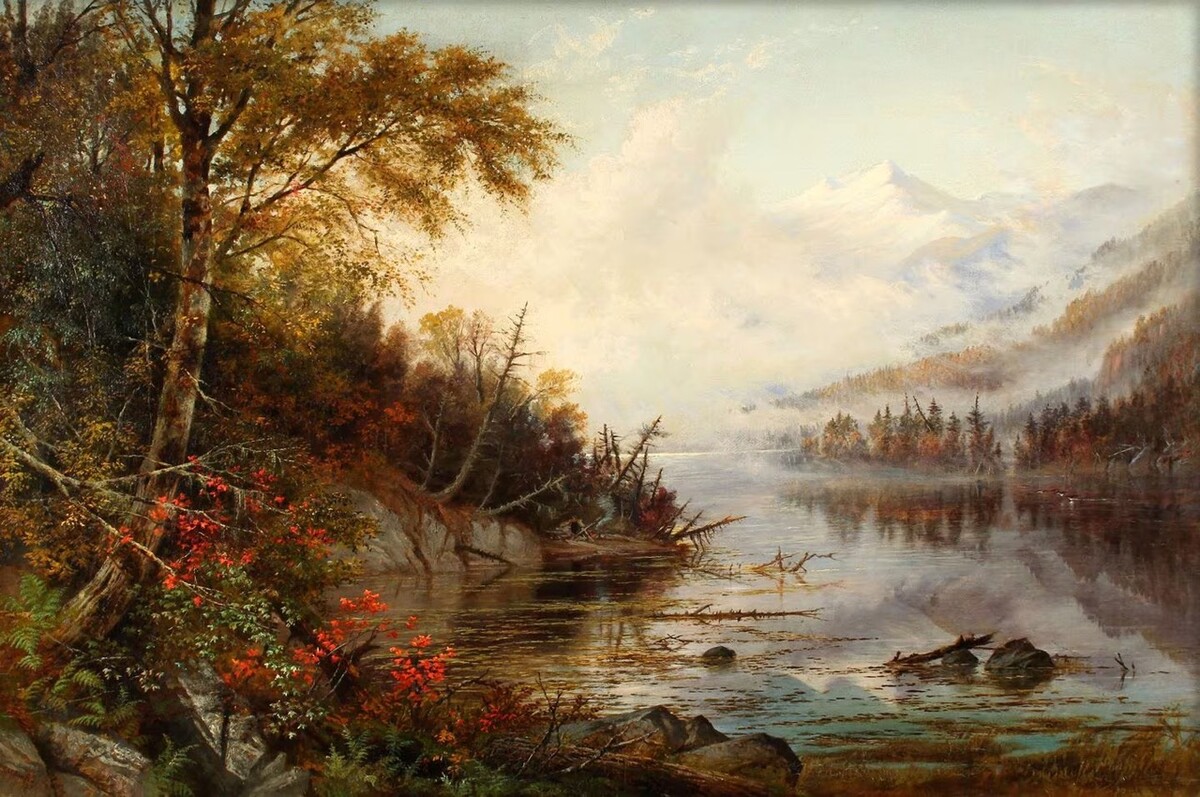
NEW BRITAIN, Conn. — Susie M. Barstow’s painting “Early October near Lake Squam” sits opposite the title page of “American Paradise,” the lushly illustrated catalog made for the Metropolitan Museum’s expansive 1987 homage to the landscape painting of the Hudson River School. Barstow’s 1886 painting surely fills the bill: The low droop of leaf-laden branches, stained an autumnal crimson, arc over a creek, shimmering under a low-hanging sun.
Barstow painted in the mid-19th and early 20th centuries, up and down the Hudson Valley and in New England alongside, in some cases literally, several of the school’s luminaries: Thomas Cole, its progenitor; Albert Bierstadt; Frederick Edwin Church. In short, she fit. Or would have, given the chance. Look closely at the splayed-open book, tucked neatly under glass in the foyer of “Women Reframe American Landscape,” just opened at the New Britain Museum of American Art. It’s not a book at all, but an epoxy-and-aluminum facsimile made by the artist Anna Plesset just this year. You can detect its falseness, if only just, which is surely part of the point: A little too slick, with the slightest bounce of light from its painted skin, its unreality transforms Plesset’s gesture from earnest wishcasting to real critique (she subtitles it, cheekily, “Second Edition”). Wouldn’t it be nice, it seems to say, if this were reality — while making very clear that it is not.
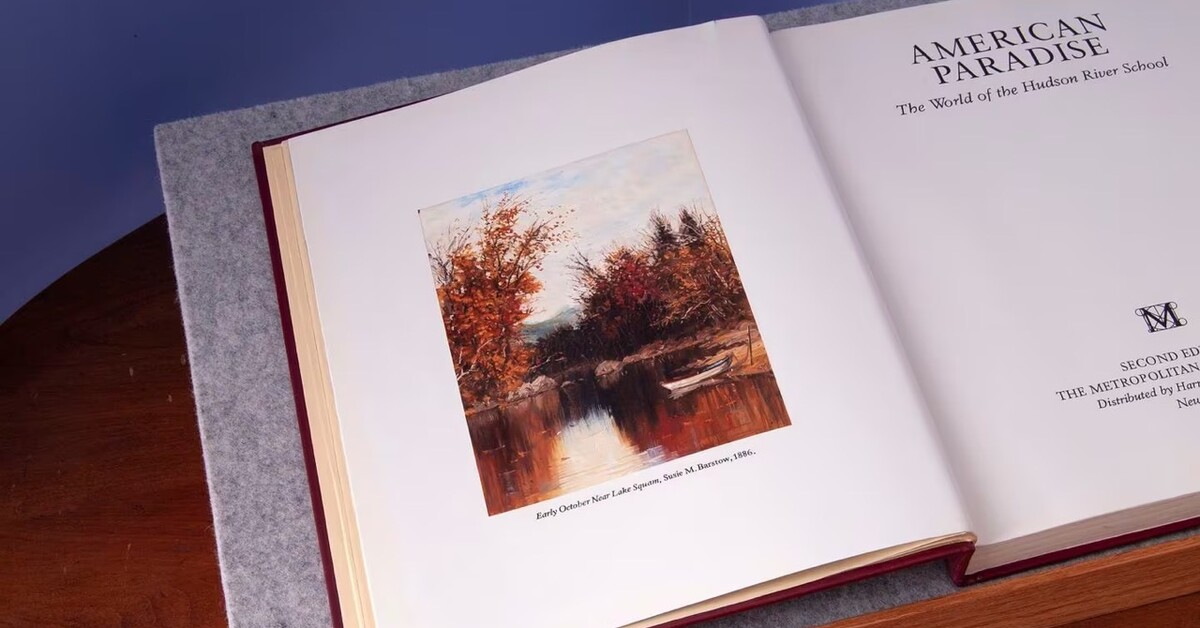
The piece sets the tone. “Women Reframe American Landscape” proposes an amendment to the American canon. The Hudson River School, all men, is firmly planted in American art history as the first bona fide American art movement; that 1987 show, still its definitive public showcase, included the work of no women. Such an edit was to be expected, though no longer excused: Even now, in the enlightened 2020s, close to 90 percent of all works in American museums are by men — and that’s with focused efforts to bridge the gender gap in the past 20 years. In 1987, the idea that Barstow might occupy a back page of the exhibition catalog, let alone its title, wasn’t even a consideration.
And so, you can consider this show a long footnote to those exclusions. It first opened in May at the Thomas Cole Historic Site, hung throughout Cole’s own Catskill home, an infiltration that felt like appropriate sacrilege (the house is period furnished, like most historic house museums; hanging works in bedrooms and parlors gave it some added oomph).
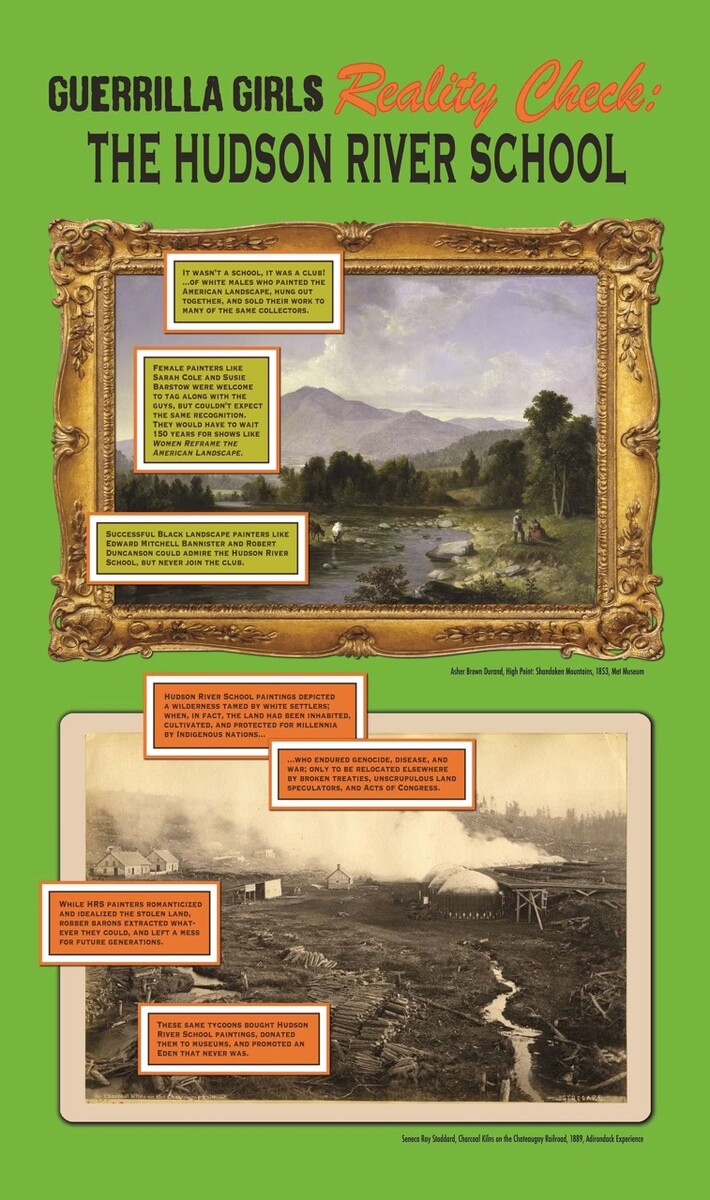
Here, in more conventional gallery spaces, the show remains just as thoughtful and troubling, if a little less confrontational. Its curators, Amanda Malmstrom, Kate Menconeri, and Nancy Siegel, have built a core exhibition of Barstow and a group of women artists of her time and place as an earnest recovery effort, a “yes, but” to the shopworn Hudson River tale. (In a panel of text on the wall, they note that more than 50 women artists associated with the school have been identified to date, an ongoing process). They’ve also cultivated a parallel display of 13 contemporary artists, like Plesset, that answer those timebound exclusions with works of their own.
What the curators present, then, is a resonant solidarity of women across decades — between Barstow’s circle, for whom defiance was simply to persist, and artists like Plesset, or Guerilla Girls, or marquee Indigenous artists like Jaune Quick-to-See Smith and Wendy Red Star, for whom defiance is the animating force of their work.
The anonymous artists’ collective Guerilla Girls emerged in 1985 to challenge the male-dominated art world order. Their work here apes the visual language of a bus shelter advertisement, but with words that hard-sell their point: “Reality Check: The Hudson River School,” reads the title in cursive script, above an idyllic river valley scene painted by the school’s Asher Brown Durand. Artists like Barstow could “tag along with the guys,” it reads, “but couldn’t expect the same recognition.” The piece also rips into the group for its blithely false depictions of a wilderness where Native Americans had been displaced, and that industry was razing by moment to moment.
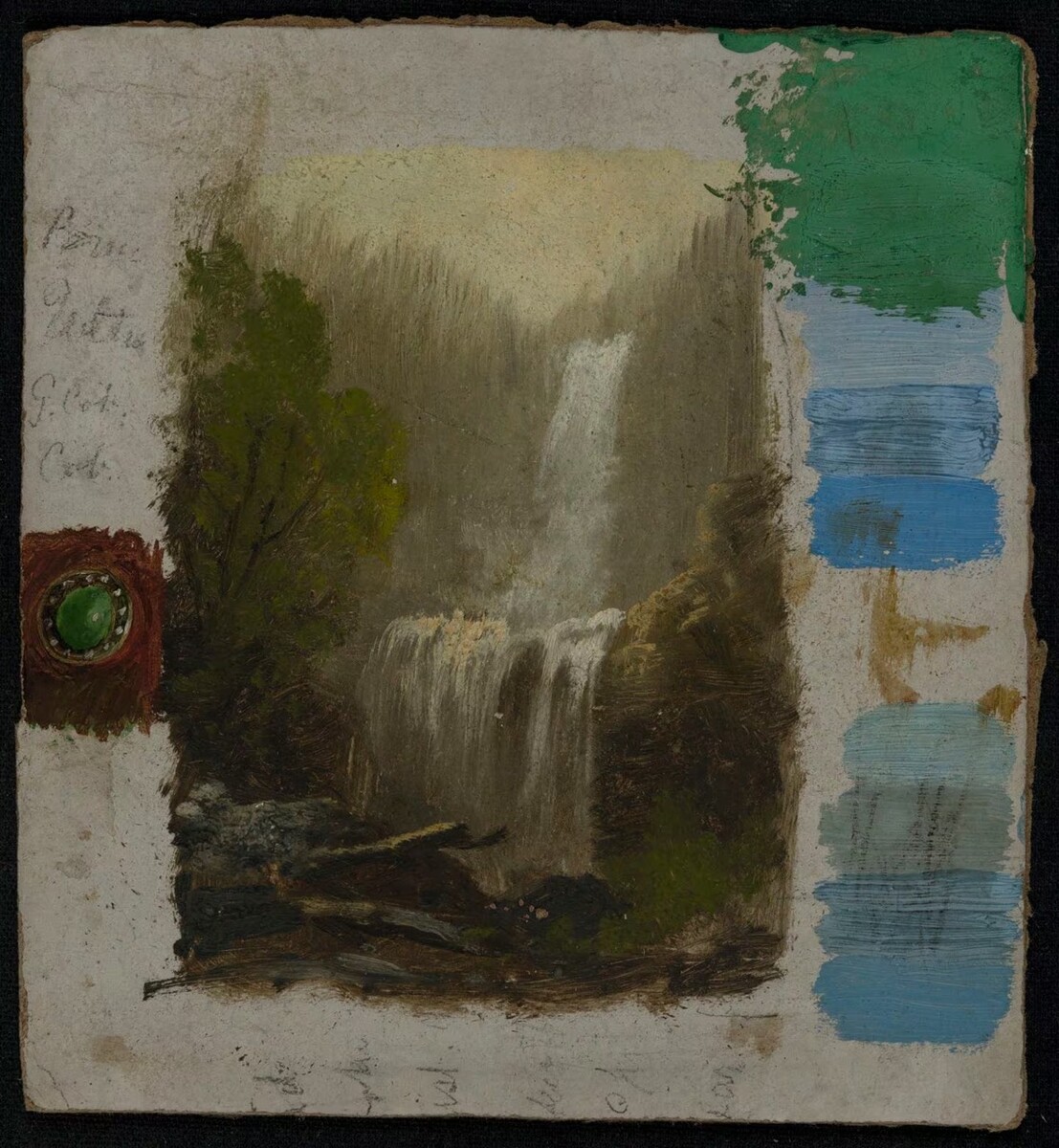
Let’s back up. Barstow, finally the star of a show, embodies a complex set of circumstances along the road to mostly forgotten, given the success she had in her own lifetime. Born in 1836 to a wealthy family in New York, she was well educated and widely traveled, ranging to Asia and India as well as through the mountains and river valleys of the Northeast. Her accomplished landscapes were well known and sold briskly in her own time.
The exhibition puts on view more than a dozen of those pictures made between the 1860s through the early 20th century (Barstow died in 1923, at 87). It cannily includes an array of her enthralling visual musings — little sketches like fleeting thoughts on paper, captured in a heartbeat — that bring to life her character and verve. The forgetting of Susie Barstow didn’t happen during her life so much as after, as dealers and critics defined the Hudson River School mythos and excised the inconvenient bits.
Barstow’s inconvenience might not have been only the product of gender; it’s clear, when looking at her work, that she was far more Modern-minded than the established boys club. In pieces like “Autumn Waterfall,” 1890, and “Pool in the Woods,” 1885, she’s playing with the loose brushwork and vibrant immediacy of Impressionism, anathema to the School’s gaudily stiff and stilted portrayals of a landscape touched by the hand of God.
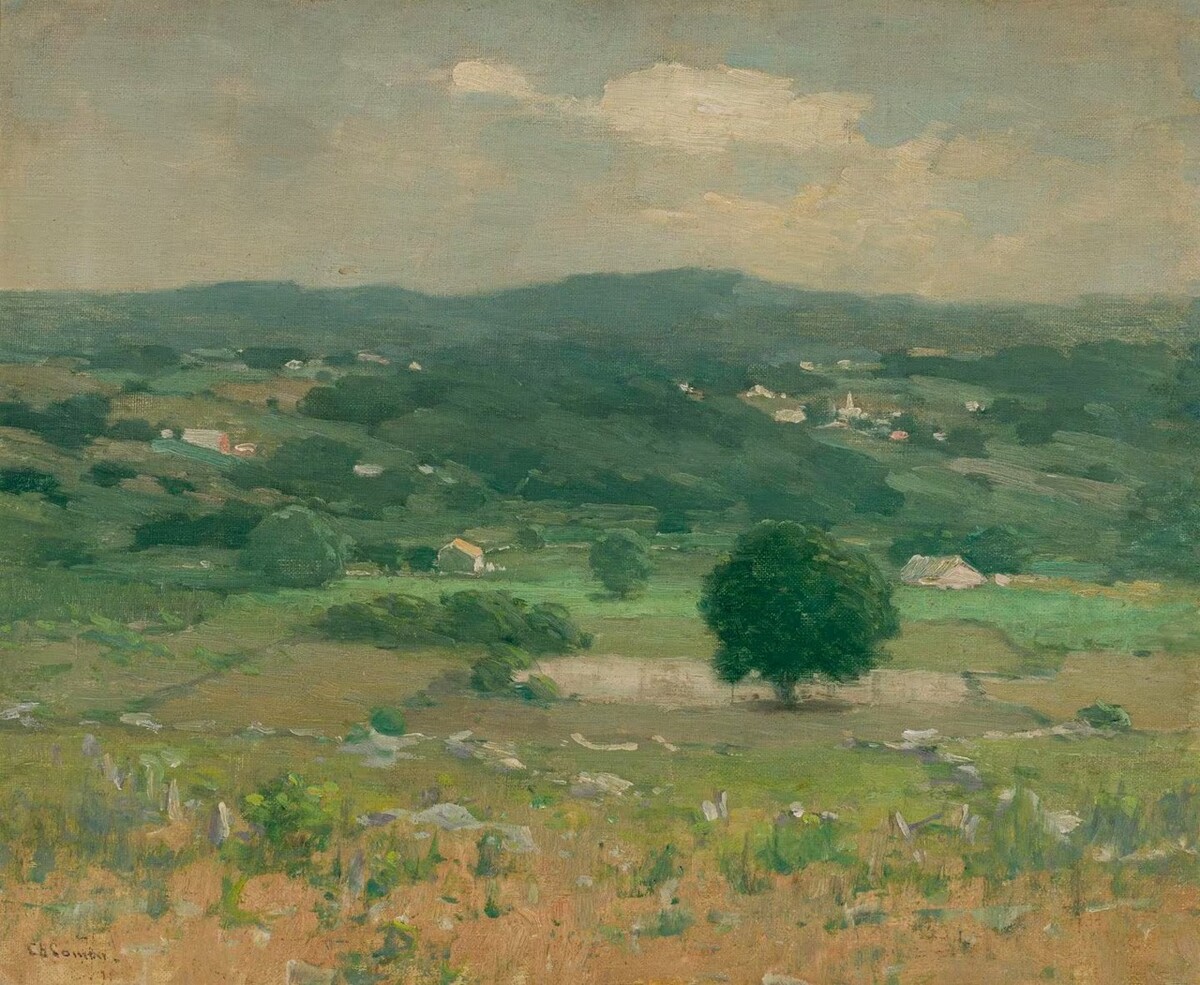
By the late 19th century, arguably Barstow’s peak — though my guess is there’s still a lot to unearth from a scholarly point of view before proving that conclusion — Cole and friends had begun to look hopelessly old-fashioned and maybe a little lame. Any upstart, let alone a woman, would have been quickly dismissed by their defenders, a fly in the ointment. And so art history narrows, as it always has, by those protecting their own turf.
Other painters hang alongside Barstow in various states of unwarranted unknown: Charlotte Buell Coman’s “Landscape,” circa 1900, a soft haze of milky greens dissolving into one another, as though seen through the clouds above; Fidelia Bridges, completely new to me, with “Barn Swallows,” 1875, sparse and moody, with birds flitting low over silvery marsh; and Julie Hart Beers’s “Woodland Stream,” 1877, the most Hudson River School-y of the crew, with its shafts of beatific light falling through the woods to the sparkling water below.
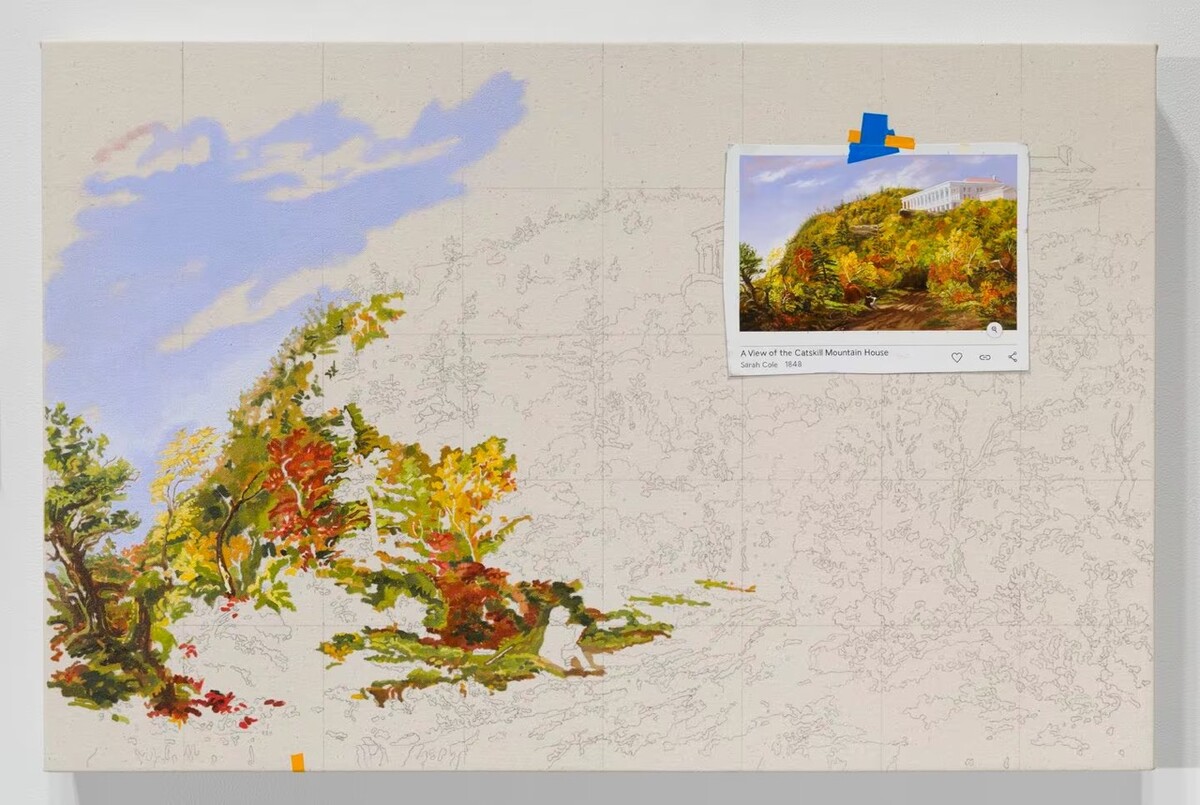
But Sarah Cole — yes, Thomas’s sister — is an evocative standout. Cole lived with and painted alongside her brother for stretches at their Catskill home; but, like the other women here, she barely registers in the margins. As though to underscore that point, her work is here only by proxy. Cole often made copies of her brother’s work as practice; Plesset pins a postcard of one of them, “A View of the Catskill Mountain House,” 1848, to a canvas with the same picture as an unfinished paint by numbers. It’s an indictment of Sarah’s diminished stature, and an emblem of a story yet to be made whole. Plesset calls it “Value Study 1,” a reduction of creative spirit to cold formula — what matters, and what does not. ‘Twas ever thus.
In the contemporary portion of the show, only Plesset and Guerilla Girls take direct aim at the Hudson River School’s specific hegemony. Fair enough; the North American landscape has been so overwhelmingly male-dominated — forget art; how about colonialism, resource extraction, real estate profiteering, and anything else — there’s no lack for material, and the artists here cover plenty of ground.
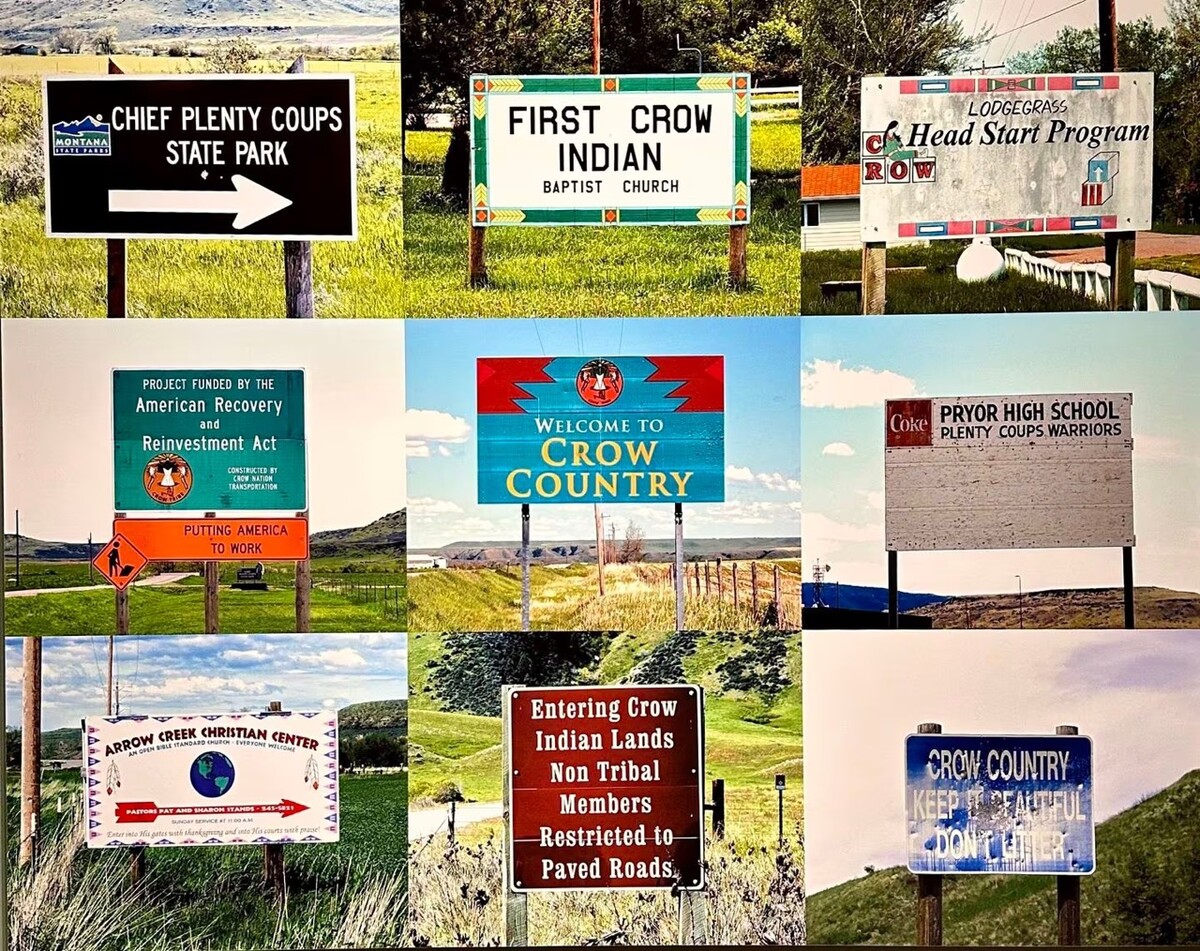
Kay WalkingStick, a Cherokee artist, paints landscapes through a lens of Indigenous experience; her “Winter Passage,” 2017, of a chilly mountainscape emblazoned with basketry patterns, intends an homage to Paiute people of the Sierra Nevadas. Red Star, a registered member of the Apsáalooke (Crow) tribe in Montana, provides “My Home Is Where My Tipi Sits,” 2011, a photo grid of utilitarian signs — churches, schools, parks — on her home reserve that serve as markers of the enduring disconnect colonialism wrought between Native Americans and their ancestral homelands. Smith, ever blunt, flips the American map upside-down in “Unhinged (Map),” 2018, which needs little explanation. Another small work, a tiny red-and-yellow beaded map of the country, needs even less. In heavy black font, it reads: STOLEN.
Here, we find affinity between colonial and colonized: The stolen land, reputations, careers, and lives have a common perpetrator, all in the service of reducing history to the exaltation of a simplistic male hero. The show won’t undo that; but add it to a growing litany of powerful correctives building history back from the margins, and drawing complexity into a picture too long built on exclusion.

Susie M. Barstow “Mountain Lake in Autumn,” 1873.HAWTHORNE FINE ART
NEW BRITAIN, Conn. — Susie M. Barstow’s painting “Early October near Lake Squam” sits opposite the title page of “American Paradise,” the lushly illustrated catalog made for the Metropolitan Museum’s expansive 1987 homage to the landscape painting of the Hudson River School. Barstow’s 1886 painting surely fills the bill: The low droop of leaf-laden branches, stained an autumnal crimson, arc over a creek, shimmering under a low-hanging sun.
Barstow painted in the mid-19th and early 20th centuries, up and down the Hudson Valley and in New England alongside, in some cases literally, several of the school’s luminaries: Thomas Cole, its progenitor; Albert Bierstadt; Frederick Edwin Church. In short, she fit. Or would have, given the chance. Look closely at the splayed-open book, tucked neatly under glass in the foyer of “Women Reframe American Landscape,” just opened at the New Britain Museum of American Art. It’s not a book at all, but an epoxy-and-aluminum facsimile made by the artist Anna Plesset just this year. You can detect its falseness, if only just, which is surely part of the point: A little too slick, with the slightest bounce of light from its painted skin, its unreality transforms Plesset’s gesture from earnest wishcasting to real critique (she subtitles it, cheekily, “Second Edition”). Wouldn’t it be nice, it seems to say, if this were reality — while making very clear that it is not.

The piece sets the tone. “Women Reframe American Landscape” proposes an amendment to the American canon. The Hudson River School, all men, is firmly planted in American art history as the first bona fide American art movement; that 1987 show, still its definitive public showcase, included the work of no women. Such an edit was to be expected, though no longer excused: Even now, in the enlightened 2020s, close to 90 percent of all works in American museums are by men — and that’s with focused efforts to bridge the gender gap in the past 20 years. In 1987, the idea that Barstow might occupy a back page of the exhibition catalog, let alone its title, wasn’t even a consideration.
And so, you can consider this show a long footnote to those exclusions. It first opened in May at the Thomas Cole Historic Site, hung throughout Cole’s own Catskill home, an infiltration that felt like appropriate sacrilege (the house is period furnished, like most historic house museums; hanging works in bedrooms and parlors gave it some added oomph).

Guerrilla Girls’ “Guerrilla Girls Reality Check: The Hudson River School,” 2023,GUERRILLA GIRLS
Here, in more conventional gallery spaces, the show remains just as thoughtful and troubling, if a little less confrontational. Its curators, Amanda Malmstrom, Kate Menconeri, and Nancy Siegel, have built a core exhibition of Barstow and a group of women artists of her time and place as an earnest recovery effort, a “yes, but” to the shopworn Hudson River tale. (In a panel of text on the wall, they note that more than 50 women artists associated with the school have been identified to date, an ongoing process). They’ve also cultivated a parallel display of 13 contemporary artists, like Plesset, that answer those timebound exclusions with works of their own.
What the curators present, then, is a resonant solidarity of women across decades — between Barstow’s circle, for whom defiance was simply to persist, and artists like Plesset, or Guerilla Girls, or marquee Indigenous artists like Jaune Quick-to-See Smith and Wendy Red Star, for whom defiance is the animating force of their work.
The anonymous artists’ collective Guerilla Girls emerged in 1985 to challenge the male-dominated art world order. Their work here apes the visual language of a bus shelter advertisement, but with words that hard-sell their point: “Reality Check: The Hudson River School,” reads the title in cursive script, above an idyllic river valley scene painted by the school’s Asher Brown Durand. Artists like Barstow could “tag along with the guys,” it reads, “but couldn’t expect the same recognition.” The piece also rips into the group for its blithely false depictions of a wilderness where Native Americans had been displaced, and that industry was razing by moment to moment.

Susie M. Barstow, “Haines Falls,” circa 1870s.CHROME DIGITAL
Let’s back up. Barstow, finally the star of a show, embodies a complex set of circumstances along the road to mostly forgotten, given the success she had in her own lifetime. Born in 1836 to a wealthy family in New York, she was well educated and widely traveled, ranging to Asia and India as well as through the mountains and river valleys of the Northeast. Her accomplished landscapes were well known and sold briskly in her own time.
The exhibition puts on view more than a dozen of those pictures made between the 1860s through the early 20th century (Barstow died in 1923, at 87). It cannily includes an array of her enthralling visual musings — little sketches like fleeting thoughts on paper, captured in a heartbeat — that bring to life her character and verve. The forgetting of Susie Barstow didn’t happen during her life so much as after, as dealers and critics defined the Hudson River School mythos and excised the inconvenient bits.
Barstow’s inconvenience might not have been only the product of gender; it’s clear, when looking at her work, that she was far more Modern-minded than the established boys club. In pieces like “Autumn Waterfall,” 1890, and “Pool in the Woods,” 1885, she’s playing with the loose brushwork and vibrant immediacy of Impressionism, anathema to the School’s gaudily stiff and stilted portrayals of a landscape touched by the hand of God.

Charlotte Buell Coman, “Landscape,” circa 1900.ANDREW BALE
By the late 19th century, arguably Barstow’s peak — though my guess is there’s still a lot to unearth from a scholarly point of view before proving that conclusion — Cole and friends had begun to look hopelessly old-fashioned and maybe a little lame. Any upstart, let alone a woman, would have been quickly dismissed by their defenders, a fly in the ointment. And so art history narrows, as it always has, by those protecting their own turf.
Other painters hang alongside Barstow in various states of unwarranted unknown: Charlotte Buell Coman’s “Landscape,” circa 1900, a soft haze of milky greens dissolving into one another, as though seen through the clouds above; Fidelia Bridges, completely new to me, with “Barn Swallows,” 1875, sparse and moody, with birds flitting low over silvery marsh; and Julie Hart Beers’s “Woodland Stream,” 1877, the most Hudson River School-y of the crew, with its shafts of beatific light falling through the woods to the sparkling water below.

Anna Plesset, “Value Study 1: A View of the Catskill Mountain House/Copied from a picture by S. Cole copied from a picture by T. Cole/1848,” 2020.ETIENNE FROSSARD
But Sarah Cole — yes, Thomas’s sister — is an evocative standout. Cole lived with and painted alongside her brother for stretches at their Catskill home; but, like the other women here, she barely registers in the margins. As though to underscore that point, her work is here only by proxy. Cole often made copies of her brother’s work as practice; Plesset pins a postcard of one of them, “A View of the Catskill Mountain House,” 1848, to a canvas with the same picture as an unfinished paint by numbers. It’s an indictment of Sarah’s diminished stature, and an emblem of a story yet to be made whole. Plesset calls it “Value Study 1,” a reduction of creative spirit to cold formula — what matters, and what does not. ‘Twas ever thus.
In the contemporary portion of the show, only Plesset and Guerilla Girls take direct aim at the Hudson River School’s specific hegemony. Fair enough; the North American landscape has been so overwhelmingly male-dominated — forget art; how about colonialism, resource extraction, real estate profiteering, and anything else — there’s no lack for material, and the artists here cover plenty of ground.

Wendy Red Star, “My Home Is Where My Tipi Sits,” 2011, Forge Project, Taghkanic, N.Y.WENDY RED STAR
Kay WalkingStick, a Cherokee artist, paints landscapes through a lens of Indigenous experience; her “Winter Passage,” 2017, of a chilly mountainscape emblazoned with basketry patterns, intends an homage to Paiute people of the Sierra Nevadas. Red Star, a registered member of the Apsáalooke (Crow) tribe in Montana, provides “My Home Is Where My Tipi Sits,” 2011, a photo grid of utilitarian signs — churches, schools, parks — on her home reserve that serve as markers of the enduring disconnect colonialism wrought between Native Americans and their ancestral homelands. Smith, ever blunt, flips the American map upside-down in “Unhinged (Map),” 2018, which needs little explanation. Another small work, a tiny red-and-yellow beaded map of the country, needs even less. In heavy black font, it reads: STOLEN.
Here, we find affinity between colonial and colonized: The stolen land, reputations, careers, and lives have a common perpetrator, all in the service of reducing history to the exaltation of a simplistic male hero. The show won’t undo that; but add it to a growing litany of powerful correctives building history back from the margins, and drawing complexity into a picture too long built on exclusion.

